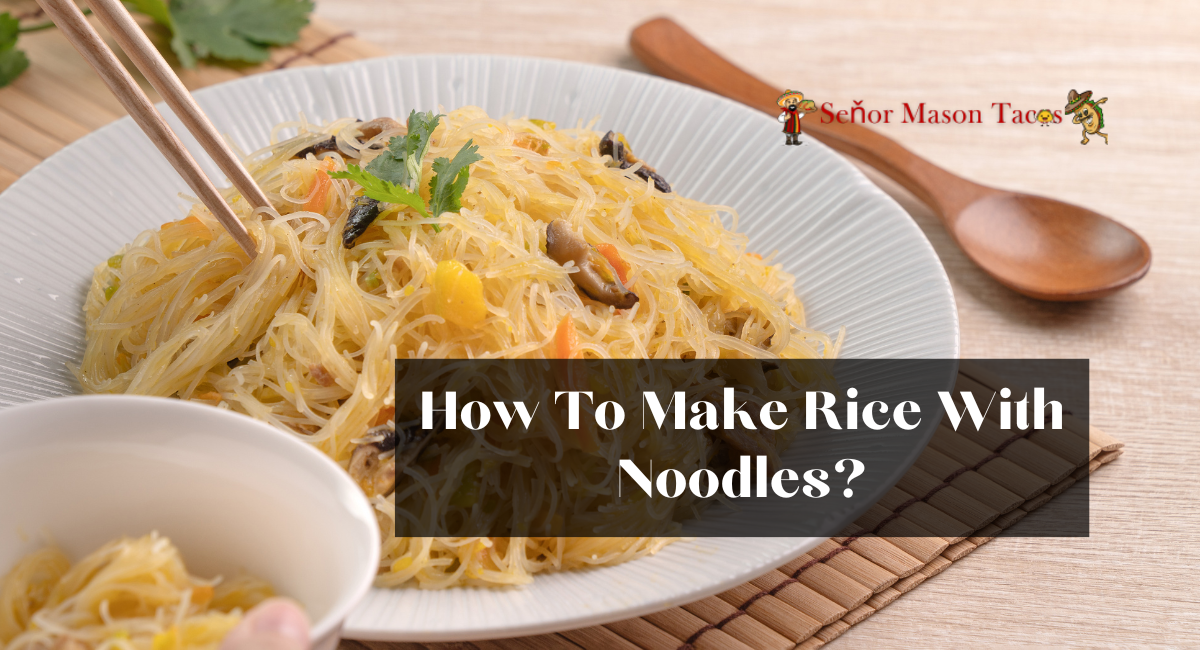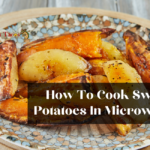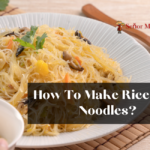When rice and noodles are combined, a delectable and gratifying dish combines the finest qualities of both components. This distinctive amalgamation presents a mélange of textures and facilitates a captivating interplay of flavors. Those intrigued by the prospect of combining the adaptability of noodles and the simplicity of rice will embark on a gastronomic journey. This article, will explain how to make rice without noodles.
What Are Rice Noodles
Rice noodles, alternatively referred to as rice vermicelli, constitute a variety of noodles predominantly composed of rice cereal or flour. They are available in various sizes and shapes, from thin to flat and broad.
With a neutral rice flavor and a light, delicate, and slightly chewy consistency, these noodles are malleable and versatile in various dishes. They find frequent application in stir-fries such as chow fun, stews like Pho, fillings for spring rolls, and noodle-based dishes like Pad Thai.
Rice noodles, composed of gluten-free tapioca starch and gluten-free rice flour, are a preferred option among individuals who have a gluten intolerance or adhere to a gluten-free dietary regimen. These noodles present a gratifying substitute for those made from wheat and feature a delightful chewiness that pairs well with various flavors and ingredients.
Ingredients
- Long-grain rice, 1 cup
- 1 cup vermicelli or slender rice noodles/rice noodles
- 2 cups water (used to prepare the rice)
- Soaking water for vermicelli
- One tablespoon oil of vegetable
- 1 onion, medium-sized, sliced finely
- 2 minced garlic cloves
- 1 cup assorted vegetables (including broccoli, carrots, peas, and corn)
- To flavor, soy sauce
- Pepper and salt to flavor
- Contrary to conventions: 1 cup minced shrimp, chicken, tofu, or another protein of your choosing
- Adjacent garnishes: Lime wedges, chopped green scallions, and fresh cilantro
How To Make Rice With Noodles?
Instructions
1. Prepare The Rice
Using frigid water, rinse 1 cup of long-grain rice until the water becomes clear.
Combine 2 cups of water with the rinsed rice in a vessel of medium size. Boil in a saucepan set over medium-high heat.
Cover the saucepan, reduce the heat to low, and simmer the rice for 15 to 20 minutes, or until tender and the water has been absorbed.
2. Prepare The Noodles
Soak 1 cup of rice vermicelli in hot water per the instructions on the package until tender while the rice is cooking.
The drained noodles should be set aside.
3. Cook The Vegetables And Protein
Warm one tablespoon of vegetable oil in a large skillet or griddle over medium-high heat.
Saute the minced garlic and coarsely chopped onion until fragrant, and the onion should become translucent.
When incorporating protein, melt it in the skillet and cook until the internal temperature reaches a safe level or until it is no longer raw in the center.
4. Combine Rice And Noodles
After preparing the rice, separate the grains by fluffing it with a fork.
Blend the cooked rice with the drained and soaked rice vermicelli gently.
5. Season And Finish
Assemble the rice and noodle mixture with soy sauce, modifying the amount according to personal preference.
As necessary, adjust the flavor balance by adding salt and pepper.
Ensure that all cooked vegetables and protein are equitably distributed throughout the rice and noodle mixture.
6. Serve
After the rice and noodles have been thoroughly heated and combined, transfer the dish to a serving platter or individual plates.
For added flavor and freshness, garnish if desired with minced green onions, fresh cilantro, or a squeeze of lime.
Storing
Refrigerate the rice and noodle dish for three days in an airtight container. To reheat, supplement with a splash of water before using the microwave or cooktop to preserve moisture. Consider preserving portions in containers safe for the freezer for one month; defrost them in the refrigerator before reheating.
Tips
- Perfect Rice: Use the correct rice-to-water ratio for perfectly frothy rice and allow it to steam undisturbed.
- Noodle Preparation: For the optimal texture, soak noodles just until tender.
- Sauté Skills: Acquire proficiency in sautéing shallots and garlic to impart a robust flavor.
- Variety of Vegetables: Include a beautiful assortment of vegetables for nutritional balance.
- Protein Power: Investigate the potential of various proteins, such as those found in chicken, tofu, or shellfish.
- Perfecting Sauce: Modify the amounts of sauce used to attain the desired level of flavor intensity.
- Spice it Up: Add a sprinkle of chili flakes or your preferred seasonings for a spicy kick.
- Fresh Herbs: To enhance the freshness of the herbs, garnish with chopped cilantro or green scallions.
- Leftover Magic: Fry leftovers into fried rice to create a speedy and delectable entrée.
- Presentation Prowess: Serve in an aesthetically pleasing dish and adorn with garnishes to enhance the visual allure.
Fundamentally, using noodles to prepare rice grants an infinite culinary ingenuity. This uncomplicated yet delectable dish allows you to explore a multitude of seasonings, rice varieties, and noodle varieties to craft a unique fusion that caters to your individual preferences.




